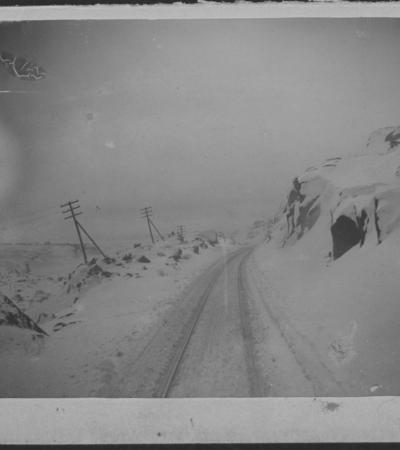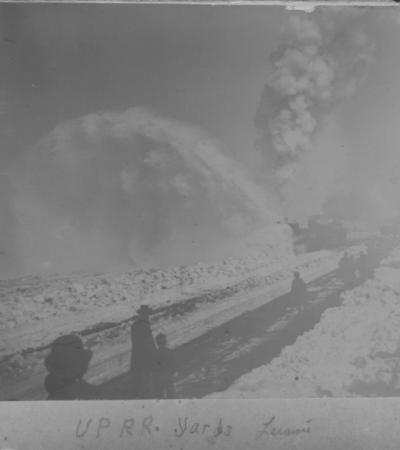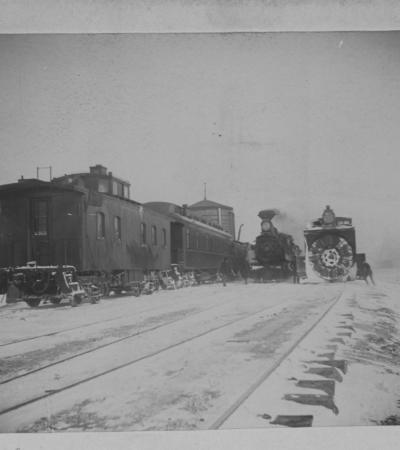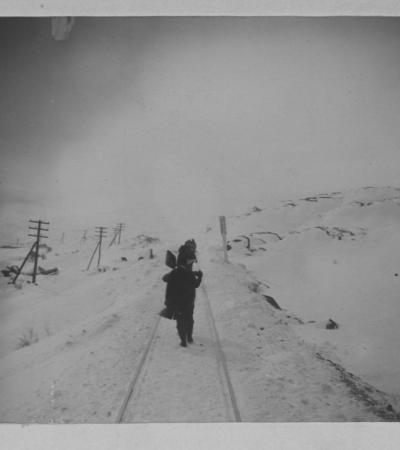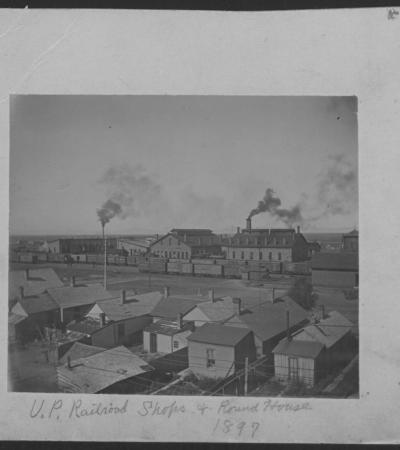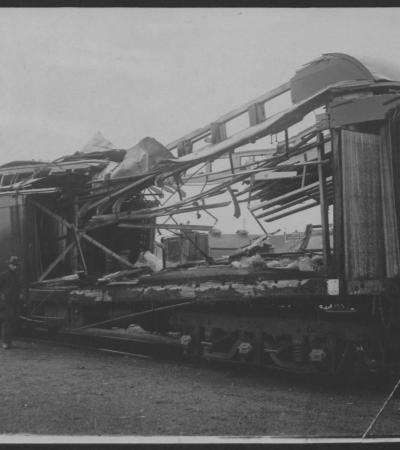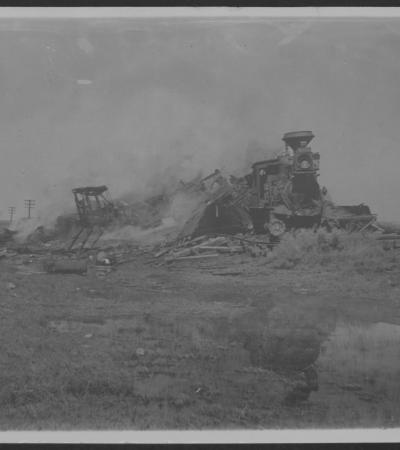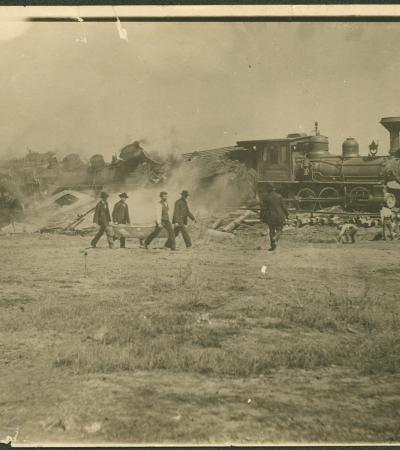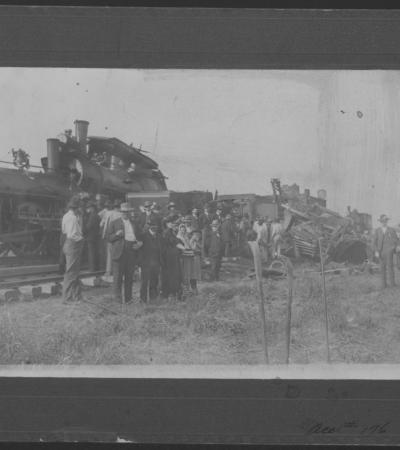Elmer Lovejoy (1872-1960) was a businessman and inventor. In 1893, he opened a general repair shop in Laramie, Wyoming. In 1902, he built and drove Laramie's first steam-driven automobile. His papers include Laramie area photographs.
Additional content for this collection can be found in the "Inventory for collection.”
Railroad tracks covered in snow at Sherman Hill in Wyoming, 1896
Sherman Hill was the highest point on the transcontinental railroad at 8,640 ft. (2,630 m.). It is located about 7.5 miles from the Sherman, a now-abandoned railroad town. In his 1877 book, The Pacific Tourist, Henry T. Williams, described the weather at Sherman:
Plowing snow at Union Pacific railyards in Laramie, Wyoming, 1896
Winter snowfalls plagued the railways. Wedge snowplows were a traditional mechanized method of clearing snow from the tracks. The plow pushed snow off the tracks, deflecting it to the side. Deeper drifts required a rotary snowplow.
Rotary plow on Sherman Hill, Wyoming, 1896
Three routes were considered for the transcontinental railroad. The one finally chosen followed the Platte River in Nebraska through to the South Pass in Wyoming, following most of the Oregon Trail. Planners knew that snow would be a concern. They were right.
Snow shovelers walk the railroad tracks on Sherman Hill, 1896
Sometimes it took human hands with shovels to get the job done.
Union Pacific Railroad shops and roundhouse in Laramie, Wyoming, 1897.
The roundhouse was one of the shops built by the Union Pacific Railroad in Laramie for repairing, servicing and rerouting engines. There were 14 engine bays and a singular turntable rotated by manpower. UPRR and its shops contributed greatly to the growth of Laramie.
Exploded express car and safe from Wilcox Robbery, 1899
It wasn't long after the transcontinental railroad was complete that thieves devised ways of robbing the trains. A famous robbery happened near Wilcox Station in Albany County, Wyoming, on June 2, 1899. A Union Pacific train was flagged down before it could cross a wooden bridge. Armed men forced the train crew to separate the locomotive from the carriages. Once the unattached locomotive had been driven across the bridge, the bridge was destroyed with dynamite. A safe in one of the carriages was blown open by dynamite, and the robbers escaped with cash and other valuables.
Wreck on the Union Pacific Railroad tracks near Laramie, Wyoming, ca. 1890.
With the increased use of the railways, collisions on the railroad tracks occurred more frequently. The cause of most crashes included train-to-train collisions, derailments caused by excessive speed, trains routed down the wrong track, and unauthorized train movements on tracks undergoing maintenance.
Group of four men carrying wounded from Union Pacific train wreck, ca. 1890
Men carry wounded away from the wreckage of a Union Pacific train.
Curious onlookers at a train wreck on the Union Pacific Railroad tracks near Laramie, Wyoming, ca. 1890.
The efforts of the Master Car Builders Association to standardize brakes, couplers, and car design, and the Safety Appliance Act of 1893, brought U.S. railroads into modern times. The Act mandated that all rail lines conducting interstate commerce must use cars that coupled and uncoupled without manual assistance of a worker standing between cars. The Act also required that the trains employ power braking systems that could control the speed of the train without a brakeman to do so manually.
